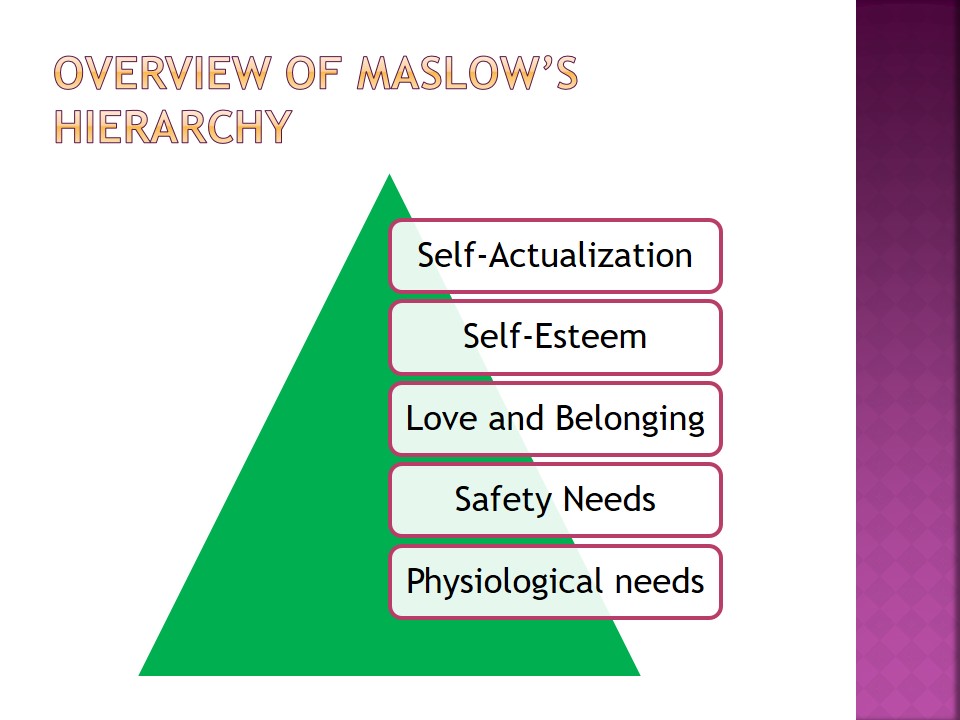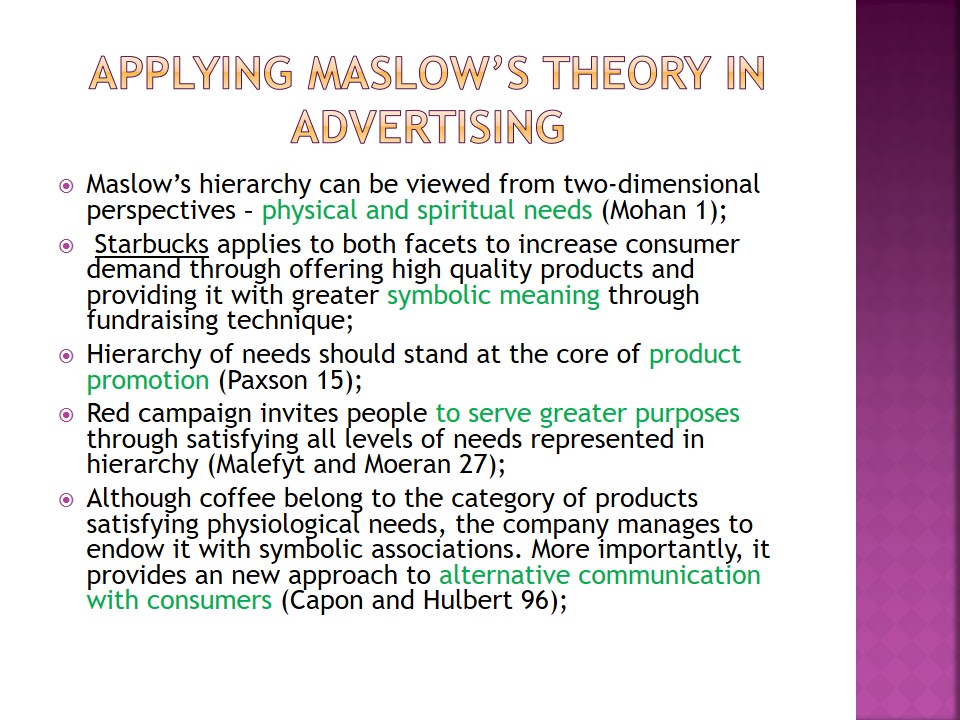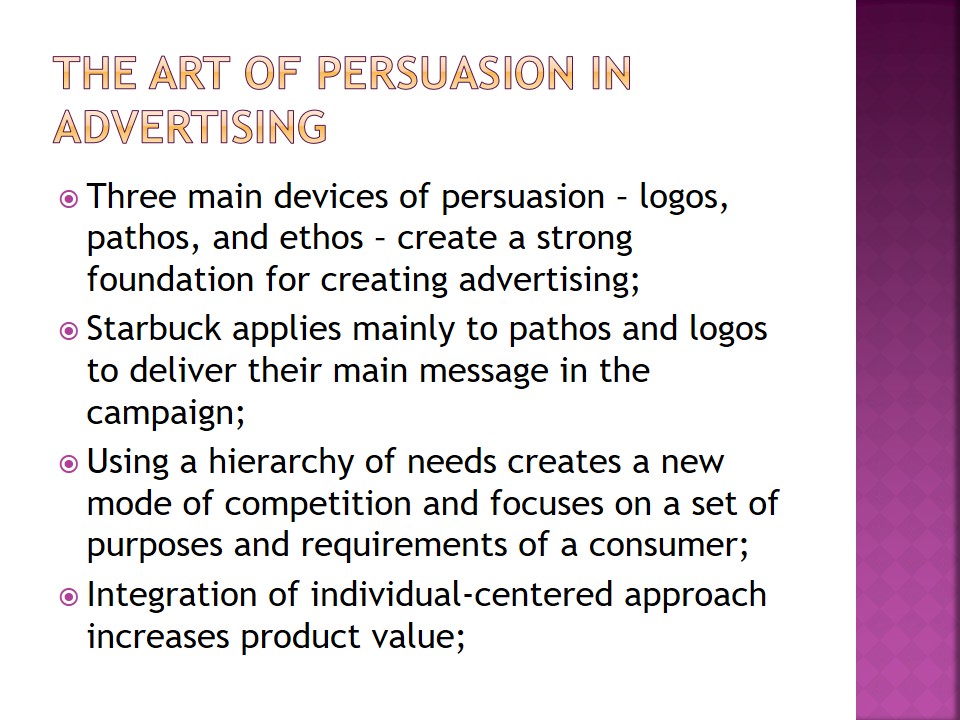Introduction: Starbucks Advertising Campaign overview
- To attract the customer’ interest, the company focuses on psychological aspect to propagate the environmental issues;
- The products is design for customers who are aware of the global situation and who experience concern with urgent problems in the world;
- The company’s greater concern with the social and cultural problems, therefore, can be regarded as beneficial advertising techniques that influences consumer behavior.
- Specific attention should be paid to Maslow’s hierarchy needs.

Overview of Maslow’s hierarchy
- Self-Actualization.
- Self-Esteem.
- Love and Belonging.
- Safety Needs.
- Physiological needs.

Applying Maslow’s theory in Advertising
- Maslow’s hierarchy can be viewed from two-dimensional perspectives – physical and spiritual needs (Mohan 1);
- Starbucks applies to both facets to increase consumer demand through offering high quality products and providing it with greater symbolic meaning through fundraising technique;
- Hierarchy of needs should stand at the core of product promotion (Paxson 15);
- Red campaign invites people to serve greater purposes through satisfying all levels of needs represented in hierarchy (Malefyt and Moeran 27);
- Although coffee belong to the category of products satisfying physiological needs, the company manages to endow it with symbolic associations. More importantly, it provides an new approach to alternative communication with consumers (Capon and Hulbert 96).

The art of Persuasion in Advertising
- Three main devices of persuasion – logos, pathos, and ethos – create a strong foundation for creating advertising;
- Starbuck applies mainly to pathos and logos to deliver their main message in the campaign;
- Using a hierarchy of needs creates a new mode of competition and focuses on a set of purposes and requirements of a consumer;
- Integration of individual-centered approach increases product value.

Works Cited
Capon, Noel and James M. Hulbert. Managing Marketing in the 21st Century: Developing and Implementing the Market Strategy. Wessex Publishing, 2007. Print.
Malefyt, Timothy deWaal and Brian Moeran. Advertising Cultures. US: Berg, 2003. Print.
Mohan, Manendra. Advertising Management: Concept and Cases. US: McGraw-Hill Education, 1989. Print.
Paxson, Peyton. Media Literacy: Thinking Critically about Advertising. US: Walch Publishing, 2002. Print.